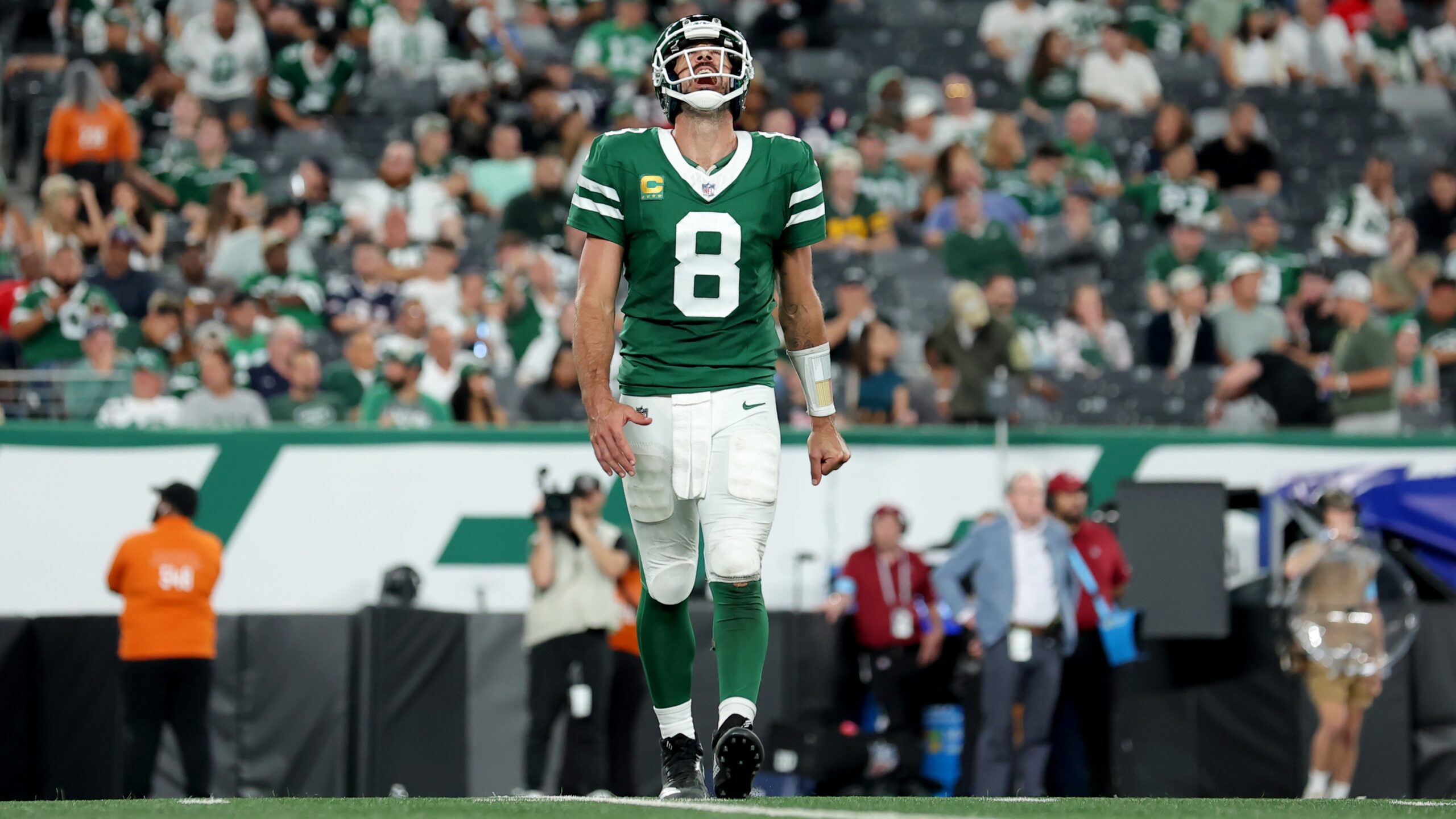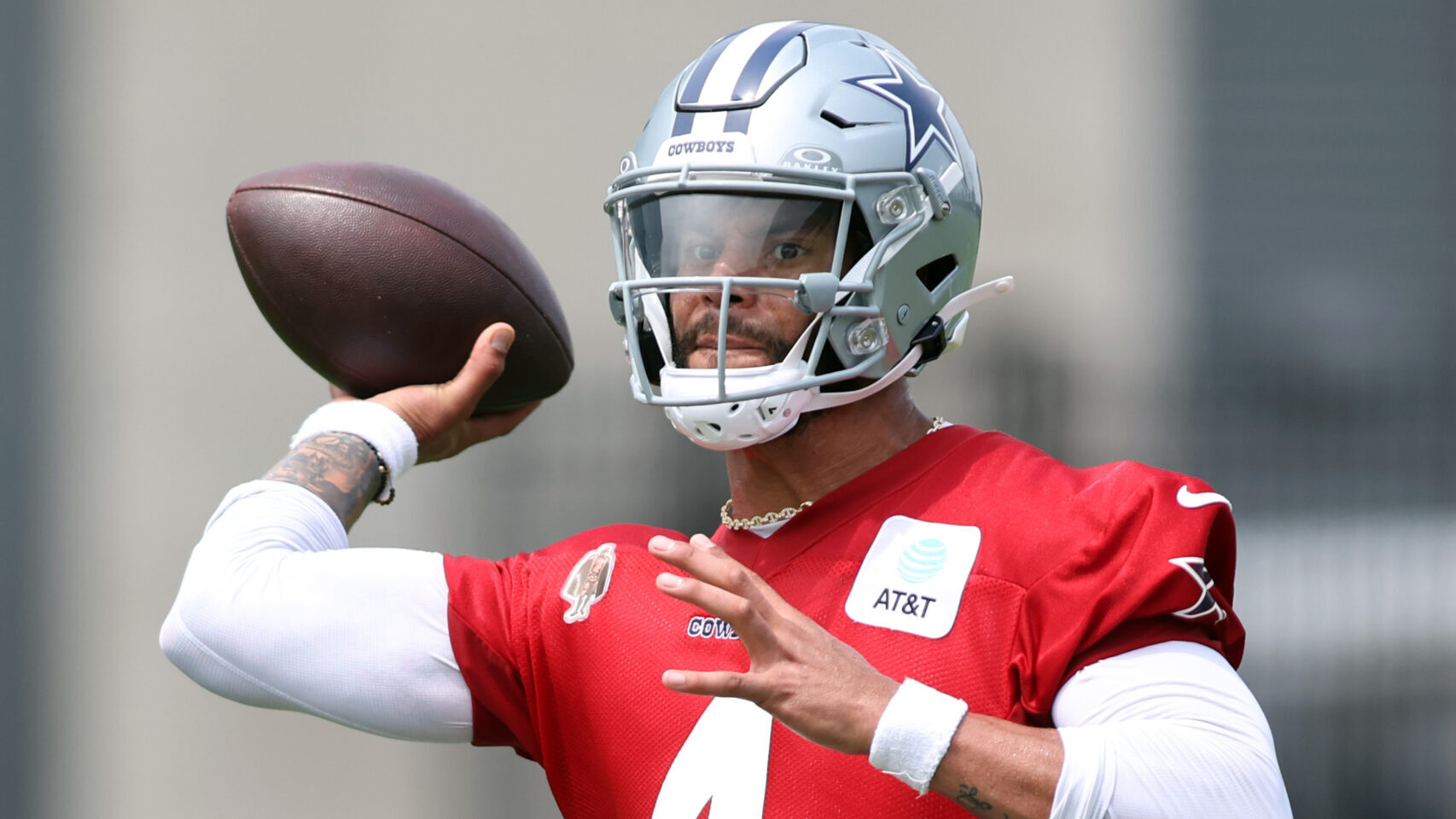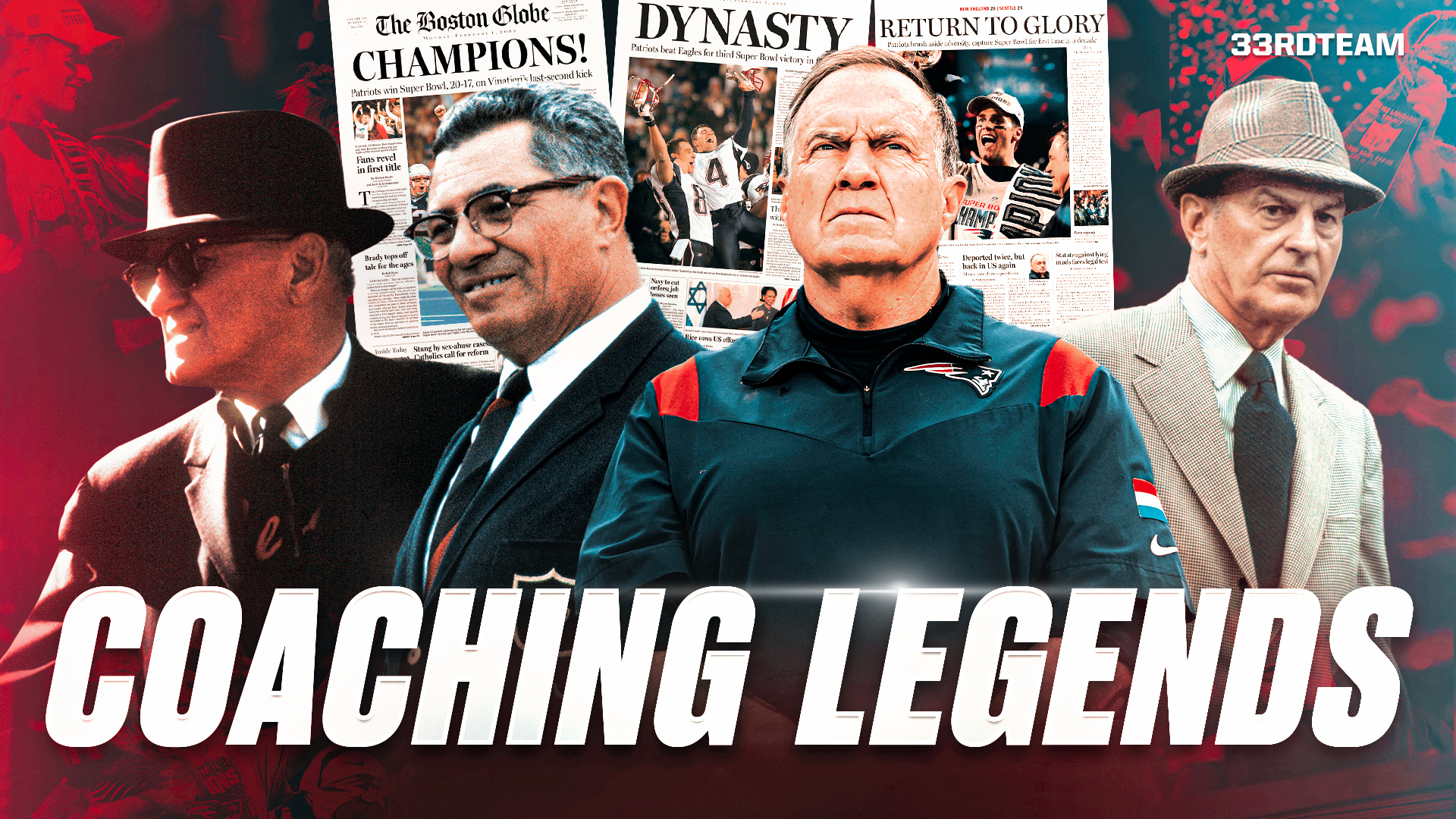Analysis
10/8/20
3 min min read
Return On Investment? DeAndre Hopkins Is the Most Valuable Offseason Acquisition
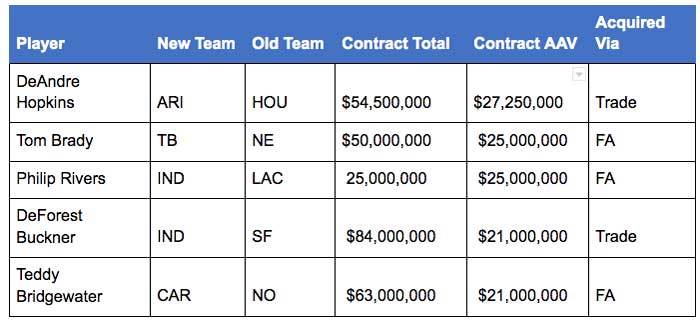
Trades and free-agent acquisitions can be among the most exciting parts of the NFL offseason. Every team hopes the addition of one key player can change the course of their season, but how much of an impact do these signings actually have? Below is a look at the five biggest acquisitions of the 2020 offseason by average yearly contract value:

Of the five top-dollar acquisitions, three were quarterbacks. To quantify how much of an impact these new signal callers have had so far this season, their performance was compared to that of the starting quarterback for their team in 2019. The metrics compared were: yards/game, touchdowns/game, interceptions/game, completion percentage and quarterback rating. The percentage improvement in each area was then averaged to find an overall improvement percentage for each QB over the 2019 starter.
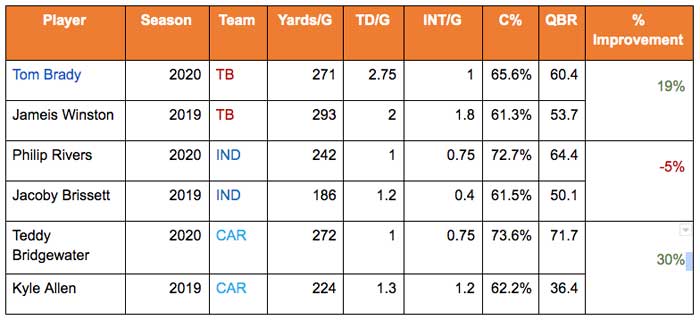
The quarterback who represents the biggest improvement so far over the previous starter is Teddy Bridgewater. This large improvement of 30% may be because the previous QB, Kyle Allen, was the backup behind Cam Newton and had only started one career game before the 2019 season. Tom Brady has delivered Tampa Bay, averaging more touchdowns and considerably fewer interceptions per game than gunslinger Jameis Winston.
Philip Rivers is the only player on the acquisition list who has been worse so far than his predecessor. While his QBR and completion percentage are higher than Jacoby Brissett's 2019 numbers, it has not resulted in the same number of touchdowns and the interception numbers have been higher.
The lone WR on the list was DeAndre Hopkins, the key player in of one of the offseason’s biggest trades. To evaluate his impact on the Cardinals, his receiving metrics were compared to Arizona’s top receiver from last season, Larry Fitzgerald. A future Hall of Famer, Fitzgerald turned 37 this season, so the Cardinals needed to make a move and brought in one of the top receivers in the league. As with quarterbacks, the improvements in different receiving metrics were averaged together to create an overall percentage of improvement. As can be seen from the table, the metrics used were receptions/game, yards/game, touchdowns/game, catch rate and Football Outsiders’ Defense-Adjusted Yards Above Replacement (DYAR)/game. DYAR is a stat that looks at the number of yards gained above those that a “replacement level player” would gain and adjusts for strength of schedule. DYAR is a good measurement of overall ability and a detailed breakdown of how it is calculated can be found here.

Overall, Hopkins has been an 87% improvement over Fitzgerald from 2019. His catch rate, receptions per game, yards per game and DYAR/game are all significantly higher and his impact is being felt all over the field for the Cardinals.
The one defensive player on the list was DeForest Buckner, a standout defensive lineman from the NFC champion 49ers who was traded to the Colts for a first-rounder. Grading individual defensive players is a bit trickier, so instead, his impact on the Colts’ entire defensive line was evaluated. The metrics used all came from Football Outsiders, and a detailed breakdown of what they mean can be found here. The metrics used were adjusted line yards, RB yards, power success, stuffed %, and adjusted sack rate. Since the first four metrics are related to run defense while adjusted sack rate is the only passing metric, adjusted sack rate improvement made up half of the total improvement percentage, while the other four made up the other half.

Buckner improved the Colts’ offensive line by approximately 6%. It can be difficult to estimate the impact of an individual defensive player because of the complexity of the position, so the position group performance was used.
Once the percentage improvement from each position is found, the contracts of the different players can be evaluated. By dividing the average yearly cost of the contract by the percentage improvement, the spending efficiency for each contract can be determined.
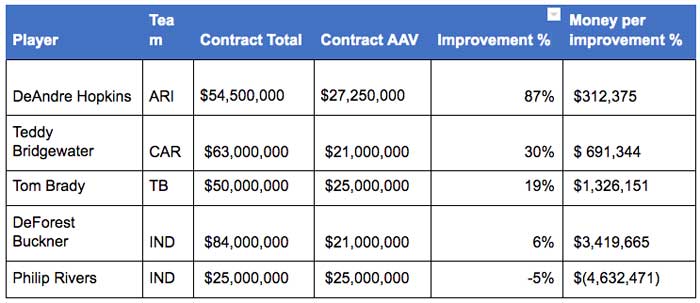
Using this method, Hopkins’ contract appears to be the best value even though it is the highest-paying contract. As Rivers is the only player whose performance to this point has been worse than his predecessor, his contract is the least valuable. This determination is far from perfect, as comparing defensive linemen to wide receivers to quarterbacks is an inexact science, but it is interesting to see how these big-money players are performing in comparison to those they have replaced.


